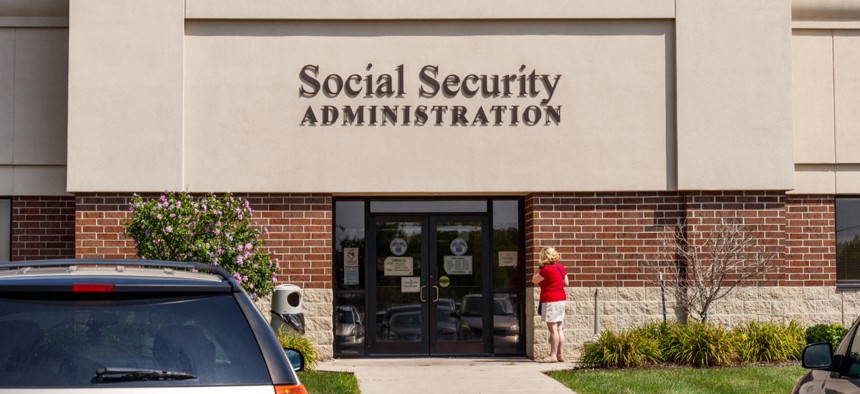4 Million Americans Waited Over an Hour in Line at Social Security Field Offices in 2019

Jonathan Weiss/Shutterstock.com
Two separate Social Security Administration inspector general audits provide a detailed picture of customer experience over the past decade at the agency.
Millions of Americans are waiting in line longer at Social Security Administration field offices than they were 10 years ago despite fewer people using the agency’s in-person services.
According to a July audit by the SSA inspector general, 43 million Americans waited an average 24.8 minutes to see a customer service representative at the agency’s 1,200-plus field offices during fiscal 2019, compared to 45.4 million Americans waiting about 19 minutes on average in 2010. Auditors found 4.2 million Americans waited an hour or longer to meet with a representative in 2019, nearly double the 2.3 million Americans who waited that long in 2010.
Auditors also indicated that from 2010 to 2020, 21.6 million Americans left an SSA field office without receiving any service, or 5% of the total 430 million total visitors during that period. That equates to approximately 2.2 million customers per year.
Auditors attributed the increased wait times over the decade to several factors, including staffing losses and reducing operating hours of field offices from “a high of 35 hours per week to a low of 27 hours per week.” According to interviews from SSA officials, the agency “lost approximately 3,000 field office employees” from 2010 to 2013 due to a three-year hiring freeze caused by “lower-than-requested funding.” Another hiring freeze came in 2016, and recent agency plans to hire 1,900 new personnel in 2020 have been complicated by the coronavirus pandemic, which has forced increased remote work and impacted nearly every field office.
A separate audit prepared by the SSA IG in May found similar customer experience issues plaguing the agency’s telephone services. The audit—which again measured wait times for customers to chat via an 800-number with a customer service representative—found callers waited longer for service in 2020 than they did in 2010. Further, the number of calls employees answered decreased, though the agency reported an increase in the number of callers who were able to resolve their issues in a single call. Teleservice center staff declined 12% over the decade, auditors said.
The delayed wait times come as the agency faces a record number of total beneficiaries receiving Old-Age, Survivors and Disability Insurance benefits and Supplemental Security Income payments. In 2009, a total of 60 million Americans received such benefits, but that number has ballooned 25% to nearly 76 million Americans today. As a result, the agency’s overall customer experience performance declined, though its telephone service was comparable with other federal agencies.
“While SSA did not fare as well compared to government and private sector benchmarks, caller satisfaction was above the federal average,” the auditors state. “To improve callers’ experience and satisfaction, SSA plans to combine all its telephone service offerings into one platform to route calls to the best source quickly. In addition, SSA is implementing other improvements to its call center process and is hiring additional employees to answer telephone calls.”
The audits were conducted at the November request of Rep. John Larson, D-CT, who chairs the House Ways and Means subcommittee on Social Security.






